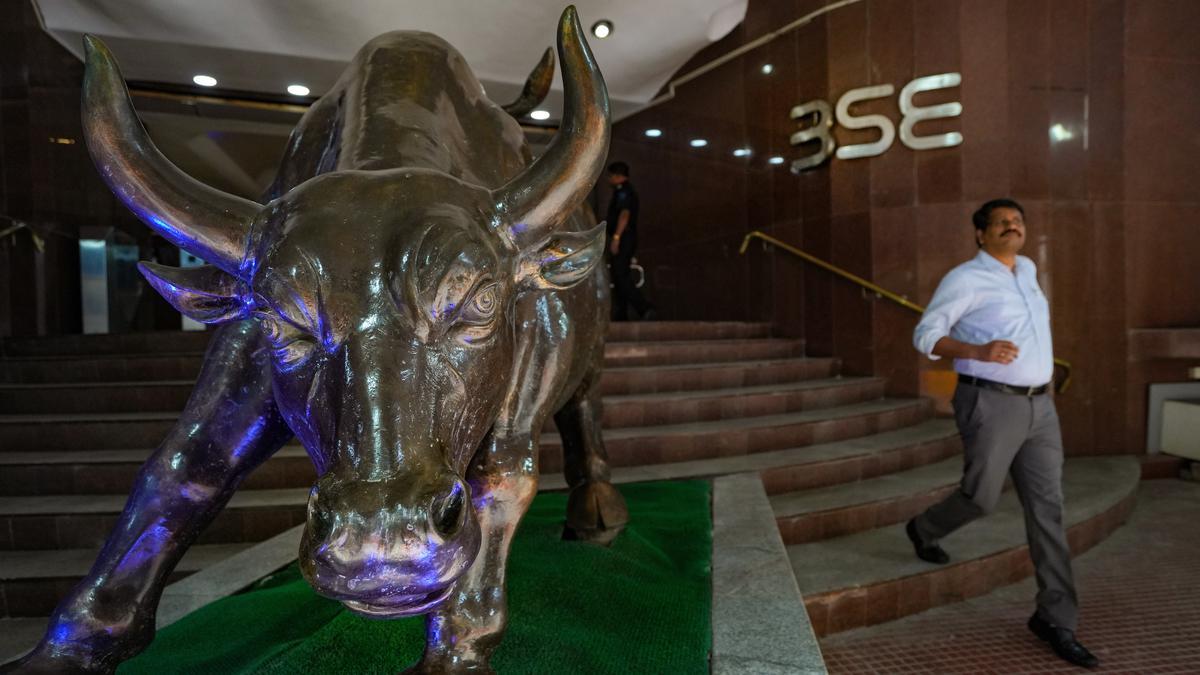
Market capitalisation of six of top-10 valued firms jumps ₹1.85 lakh crore; LIC, Infosys biggest winners
The Hindu
Last week, top Indian firms saw significant market valuation changes, with Reliance Industries leading the pack despite its Mcap not gaining.
The combined market valuation of six of the top 10 valued firms jumped ₹1,85,186.51 crore last week, with Life Insurance Corporation of India (LIC) and Infosys emerging as the biggest gainers.
Last week, the BSE benchmark climbed 728.07 points or 0.90%.
The valuation of LIC surged from ₹44,907.49 crore to ₹7,46,602.73 crore. Infosys added ₹35,665.92 crore to its market valuation at ₹7,80,062.35 crore.
ITC’s valuation soared by ₹35,363.32 crore to ₹6,28,042.62 crore. The market capitalisation (Mcap) of Tata Consultancy Services (TCS) jumped from ₹30,826.1 crore to ₹15,87,598.71 crore and that of Bharti Airtel climbed from ₹30,282.99 crore to ₹8,62,211.38 crore. HDFC Bank’s valuation rallied ₹8,140.69 crore to ₹12,30,842.03 crore.
However, the Mcap of Reliance Industries tumbled by ₹62,008.68 crore to ₹20,41,821.06 crore. The valuation of ICICI Bank declined by ₹28,511.07 crore to ₹8,50,020.53 crore.
State Bank of India’s Mcap declined by ₹23,427.1 crore to ₹7,70,149.39 crore. Hindustan Unilever’s valuation went down by ₹3,500.89 crore to ₹6,37,150.41 crore.
Reliance Industries remains the most valued firm followed by TCS, HDFC Bank, Bharti Airtel, ICICI Bank, Infosys, State Bank of India, LIC, Hindustan Unilever and ITC.

The Union Budget unveiled on February 1, 2025, has come at a time of unprecedented global uncertainty and a flagging domestic economy. The real GDP growth is estimated at 6.4% for 2024-25 and between 6.3-6.8% for 2025-26, a far cry from >8 percent growth required annually to make India a developed nation by 2047. While much attention has been devoted to the demand stimulus through income tax cuts, not enough is said about the proposed reforms in urban development, tariff rationalisation, and regulatory simplification aimed at making Indian cities and corporates more competitive. Since the majority of economic activity is located in cities (urban areas account for ~55% of GDP) and produced by large corporates (~40% of the national output and 55% of India’s exports), the above-mentioned reforms have a pivotal role in improving India’s trend growth rate. Below we unpack each reform.












